The Camino de Santiago, also known as the Way of St. James, is a centuries-old pilgrimage route that has captivated the imaginations of travelers worldwide. Tracing its origins to the 9th century, this historic path has evolved into a symbol of spiritual awakening and cultural exchange. Countless individuals have embarked on this transformative journey, driven by a desire to connect with the sacred and explore the depths of their own being. As we uncover the rich history and enduring significance of the Camino, we’ll discover why this iconic pilgrimage continues to draw seekers from all walks of life, each seeking their own path to enlightenment.
Key Points
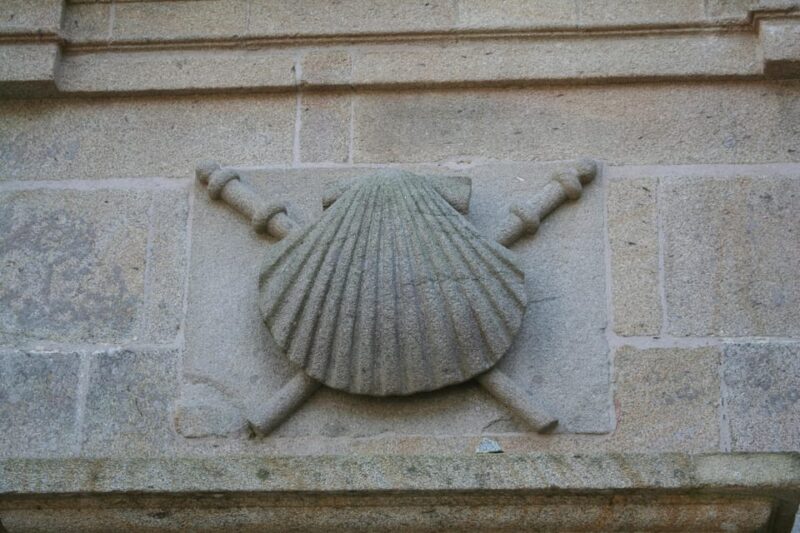
-
The pilgrimage route of the Camino de Santiago dates back to the 9th century, following the discovery of the remains of St. James.
-
The Camino de Santiago gained immense popularity during the Middle Ages, attracting travelers from across Europe for religious and trade purposes.
-
The physical and spiritual challenges of the pilgrimage route have shaped its enduring significance, appealing to both religious and secular travelers.
-
The scallop shell and yellow arrows serve as iconic symbols that guide and unify the diverse participants in their shared spiritual journey.
-
The Cathedral of Santiago marks the final destination of the pilgrimage, and the Pórtico de la Gloria features carvings depicting the spiritual themes of the Camino.
Tour Overview
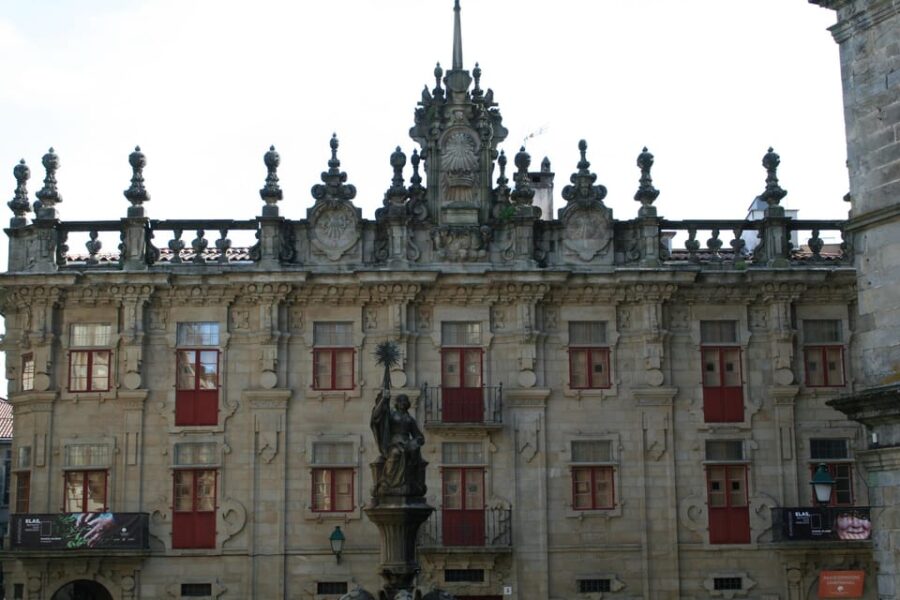
The ‘Peregrinatio: History of the Way of St. James’ tour provides a comprehensive 2-hour exploration of the historic centre of Santiago de Compostela, delving into the origins and evolution of the famed Camino de Santiago pilgrimage route.
Priced from $13.43 per person, the tour is available in both English and Spanish, ensuring accessibility for a wide range of participants.
Wheelchair users can also join the experience, making it inclusive for all.
The tour departs from the Pilgrims Office at 4 PM, allowing visitors to enjoy the city’s rich history and spiritual significance.
With a focus on symbolic elements like the scallop shell and yellow arrows, this tour promises an insightful and engaging journey along the Way of St. James.
Fascinated by Santiago De Compostela's past? More historical tours we've covered
Highlights of the Experience
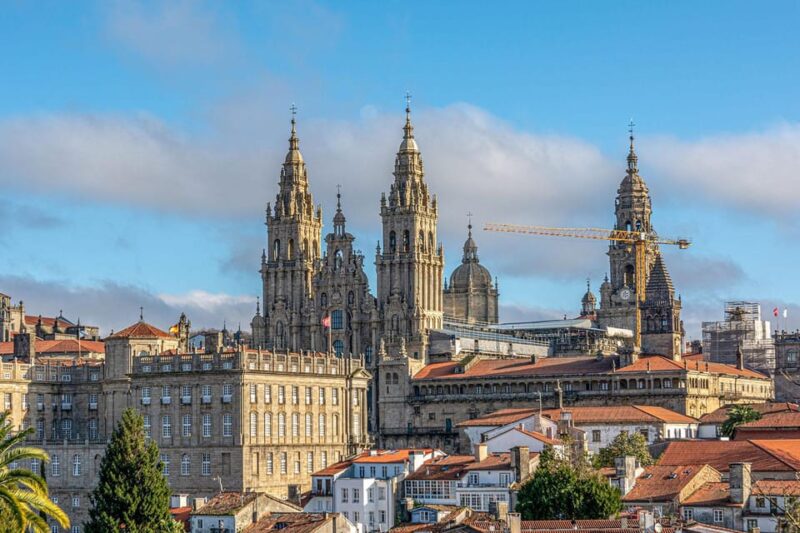
Guided tours of the historic centre of Santiago de Compostela provide visitors with a captivating exploration of the Camino de Santiago’s origins and evolution.
The tour offers an insightful perspective into the spiritual significance of this pilgrimage route for those who’ve undertaken the journey. Participants will discover symbolic elements like the scallop shell and yellow arrows that have guided pilgrims for centuries.
The tour also includes visits to major landmarks, such as the iconic Cathedral of Santiago, allowing guests to enjoy the rich history and vibrant culture of this revered destination.
The tour highlights include:
-
Guided exploration of the Camino de Santiago’s history and evolution
-
Insight into the spiritual significance of the pilgrimage for devout travellers
-
Discovery of symbolic elements that have marked the route for pilgrims
-
Visits to the city’s renowned landmarks, including the Cathedral of Santiago
Booking Details
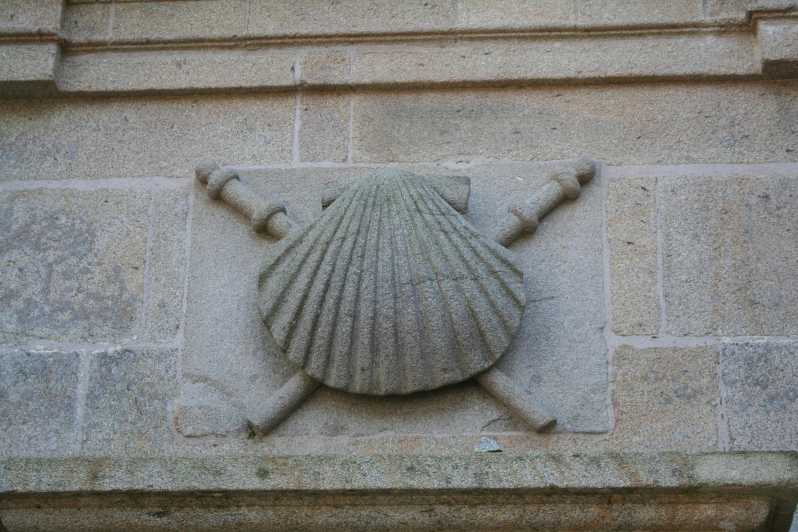
You can conveniently reserve your spot on the tour without any upfront payment. There’s also a free cancellation policy up to 24 hours in advance, allowing for flexible travel planning.
| Booking Details | |
|---|---|
| Reservation | Pay later option |
| Cancellation | Free up to 24 hrs |
| Flexibility | Book your spot |
Whether you’re planning your trip or need to adjust your plans, the booking process for the "Peregrinatio: History of the Way of St. James" tour is designed with your convenience in mind. With no upfront payment required and a generous cancellation policy, you can confidently secure your spot and focus on your upcoming journey.
Inclusions and Pricing
Alongside the flexible booking options, the ‘Peregrinatio: History of the Way of St. James’ tour package includes a guided experience led by an official guide.
Priced from $13.43 per person, the 2-hour tour is available in both English and Spanish to accommodate visitors’ preferences.
The tour highlights include:
-
Exploration of the Camino de Santiago’s origins and evolution.
-
Insight into the spiritual significance of the pilgrimage for travelers.
-
Discovery of the symbolic elements like the scallop shell and yellow arrows.
-
Visits to major landmarks, including the renowned Cathedral of Santiago.
The tour is also wheelchair accessible, ensuring an inclusive experience for all participants.
More Great Thing To Do NearbyCustomer Feedback
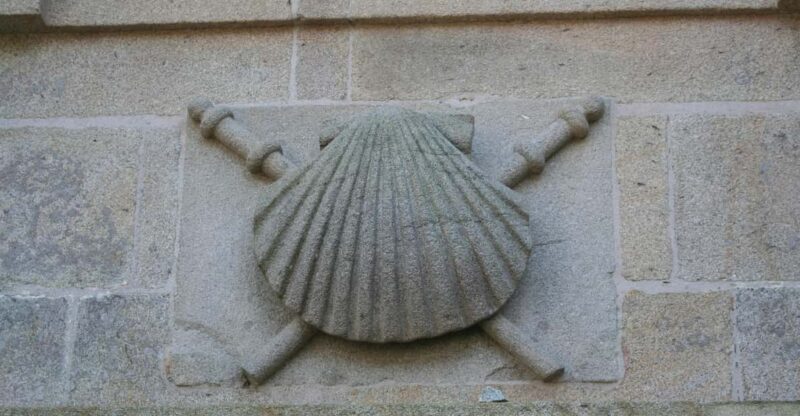
Reviewers rave about the tour’s interesting and humorous presentation, which provides valuable insights into the city of Santiago de Compostela and the history of the Camino de Santiago.
With an overall rating of 5/5 based on 2 reviews, the ‘Peregrinatio: History of the Way of St. James’ tour is a hit with customers.
Participants appreciate the guide’s ability to bring the city’s rich history to life, offering a deeper understanding of the spiritual significance of the pilgrimage route.
The tour’s focus on symbolic elements like the scallop shell and yellow arrows further enhances the experience, leaving visitors with a greater appreciation for the Camino de Santiago’s evolution and enduring appeal.
Origins and Evolution
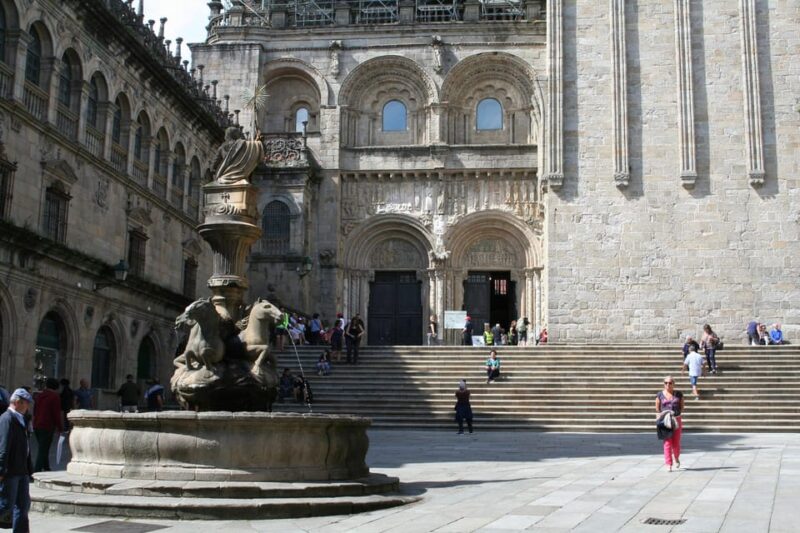
The Camino de Santiago, also known as the Way of St. James, has a rich and storied history that spans centuries, tracing its origins to the discovery of the remains of the apostle St. James in Santiago de Compostela in the 9th century.
Throughout the Middle Ages, the pilgrimage route grew in popularity, attracting travelers from across Europe who sought spiritual renewal and connection with the sacred.
The route’s evolution has been shaped by a number of key factors:
-
Increasing religious fervor and devotion to St. James
-
The rise of trade and commerce along the pilgrimage routes
-
The construction of infrastructure like bridges, hospitals, and monasteries
-
The enduring allure of the pilgrimage experience for both religious and secular reasons.
Spiritual Significance
The Way of St. James has long held profound spiritual significance for pilgrims, offering them a transformative journey of self-discovery and connection to the divine.
For centuries, those who’ve embarked on the Camino de Santiago have sought to find deeper meaning in their lives, cleanse their souls, and draw closer to God.
The physical challenges of the pilgrimage serve as a metaphor for the inner struggles faced by each traveler, who must confront their fears, doubts, and limitations.
Along the way, pilgrims discover a sense of community, humility, and gratitude that transcends religious affiliation, uniting them in a shared experience of spiritual enlightenment.
Landmarks and Symbols
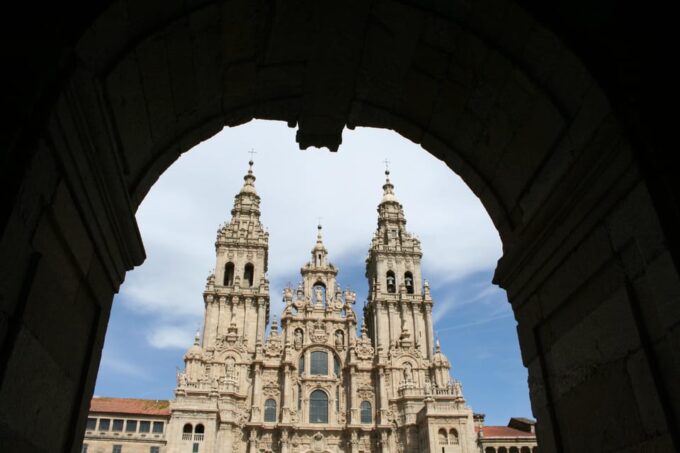
Along the Camino de Santiago, pilgrims encounter a wealth of symbolic elements that deepen their spiritual experience. The scallop shell, for instance, is a ubiquitous icon representing the journey, guiding travelers with its distinctive yellow arrows. These landmarks and symbols hold profound meaning for those traversing the historic route:
The Cathedral of Santiago, with its grand Romanesque facade, marks the final destination of the pilgrimage, signifying the culmination of a transformative journey.
The peregrino, or pilgrim, shell represents the seashells once collected by pilgrims on the shores of Galicia, symbolizing their commitment to the arduous trek.
The ‘Pórtico de la Gloria‘ at the cathedral’s entrance showcases intricate carvings depicting the Last Judgment, reminding pilgrims of their spiritual purpose.
The ‘Camino de Santiago’ signage, with its iconic yellow arrows, provides a visual beacon, guiding pilgrims along the historic route.
Frequently Asked Questions
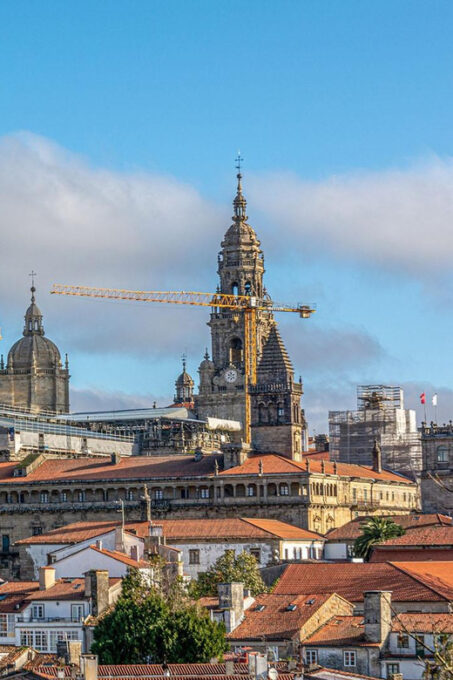
What Is the Minimum Group Size for the Tour?
The minimum group size for this tour is not specified. The booking information indicates that the tour allows flexibility in selecting participants, without mentioning a minimum group requirement.
Do I Need to Bring Any Special Equipment?
No, you don’t need any special equipment for this tour. Comfortable walking shoes and weather-appropriate clothing are all that’s required. The tour is designed to be accessible, so you can fully participate without any specialized gear.
Can I Take Photographs During the Tour?
Yes, you can take photographs during the tour. The guided experience encourages participants to capture the historic sights and symbolic elements along the way. Just be mindful not to disrupt the group or impede the guide’s presentation.
Is the Tour Suitable for Families With Young Children?
The tour is suitable for families with young children. It’s wheelchair accessible, and the 2-hour duration is appropriate for younger participants. The guide can provide a family-friendly experience to engage children throughout the tour.
Are There Any Discounts Available for Students or Seniors?
The tour does offer discounts for students and seniors. However, the specific discount rates aren’t provided in the available information. It’s best to check with the tour operator directly to inquire about any applicable student or senior discounts.
Recap
The Camino de Santiago has endured as a transformative pilgrimage for over a millennium.
From its origins in the 9th century to its modern-day significance, the Way of St. James continues to captivate travelers seeking spiritual awakening and personal growth.
Whether seeking faith, trade, or cultural exchange, the Camino’s landmarks and symbols have long represented the journey’s profound impact on those who walk its historic path.
You can check if your dates are available here:More Historical Tours in Santiago De Compostela
More Tour Reviews in Santiago De Compostela
- ✅From Santiago De Compostela Rias Baixa Unforgettable Tour
- Get to Know Santiago in 4 Hours: Its Cathedral, Portico and Historic Center.
- Tour to Finisterre and Coastal Villages From Santiago De Compostela
- Santiago De Compostela: Tour of the Templars in Spanish
- Walking Tour of the Emblematic Places of Santiago
- Private a Coruña Tour From Santiago De Compostela
Not for you? Here's more things to do in Santiago De Compostela we have recnetly reviewed
- 2 Best Food Tours In Santiago De Compostela
- 3 Best Full-Day Tours In Santiago De Compostela
- 3 Best Private Car With Driver Services In Santiago De Compostela
- Best Lunch Experiences In Santiago De Compostela
- Santiago De Compostela Private Transfer From the City Centre to SCQ Airport
- Road to Finisterre: An Unforgettable Experience
- Santiago De Compostela: Night Tour Secrets of Compostela.
- Santiago De Compostela: Cathedral and Its Museum Guided Tour
- Santiago Cathedral Guided Tour With Portico De La Gloria
- Complete Tour of the Cathedral of Santiago: Pórtico Da Gloria and Museum
- Santiago Complete Tour: City, Portico and Cathedral Tickets
- ✅From Santiago De Compostela Rias Baixa Unforgettable Tour
